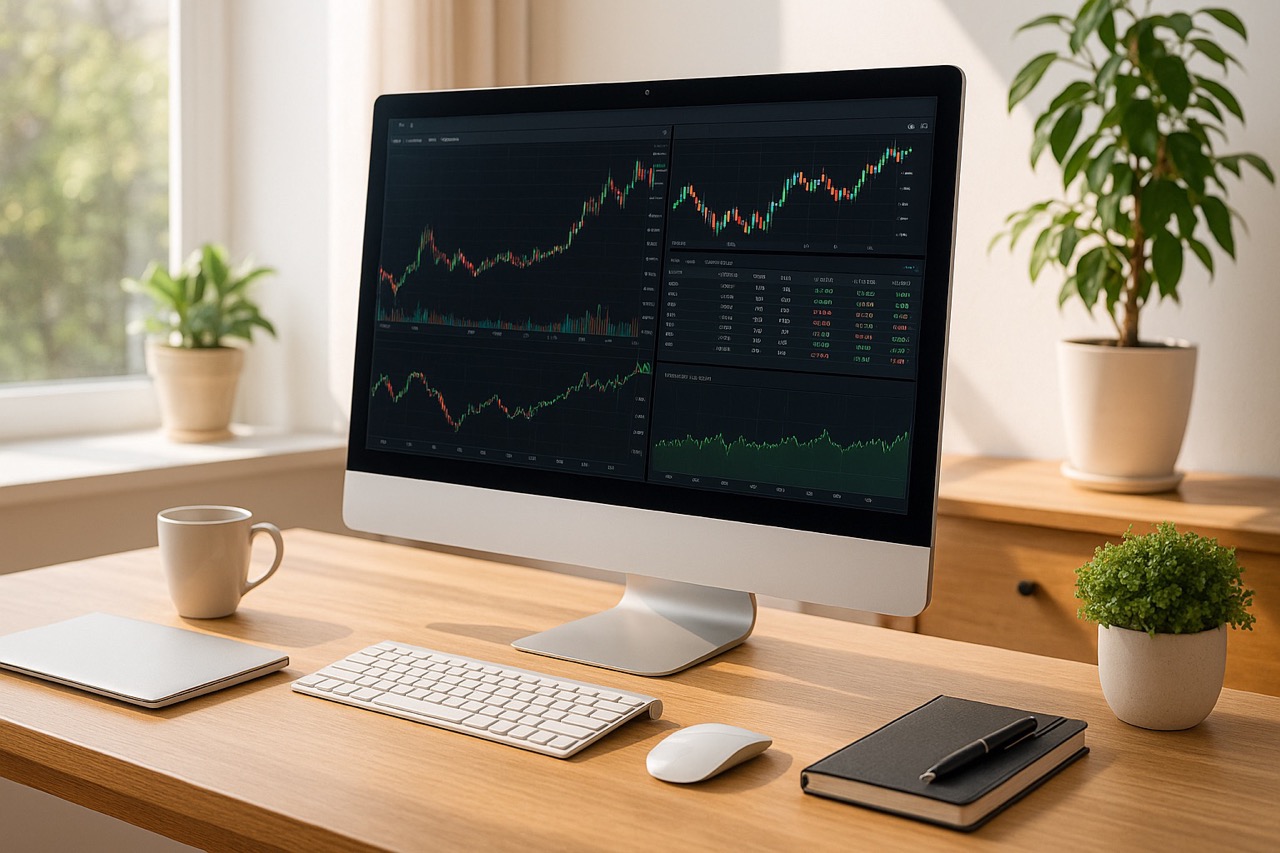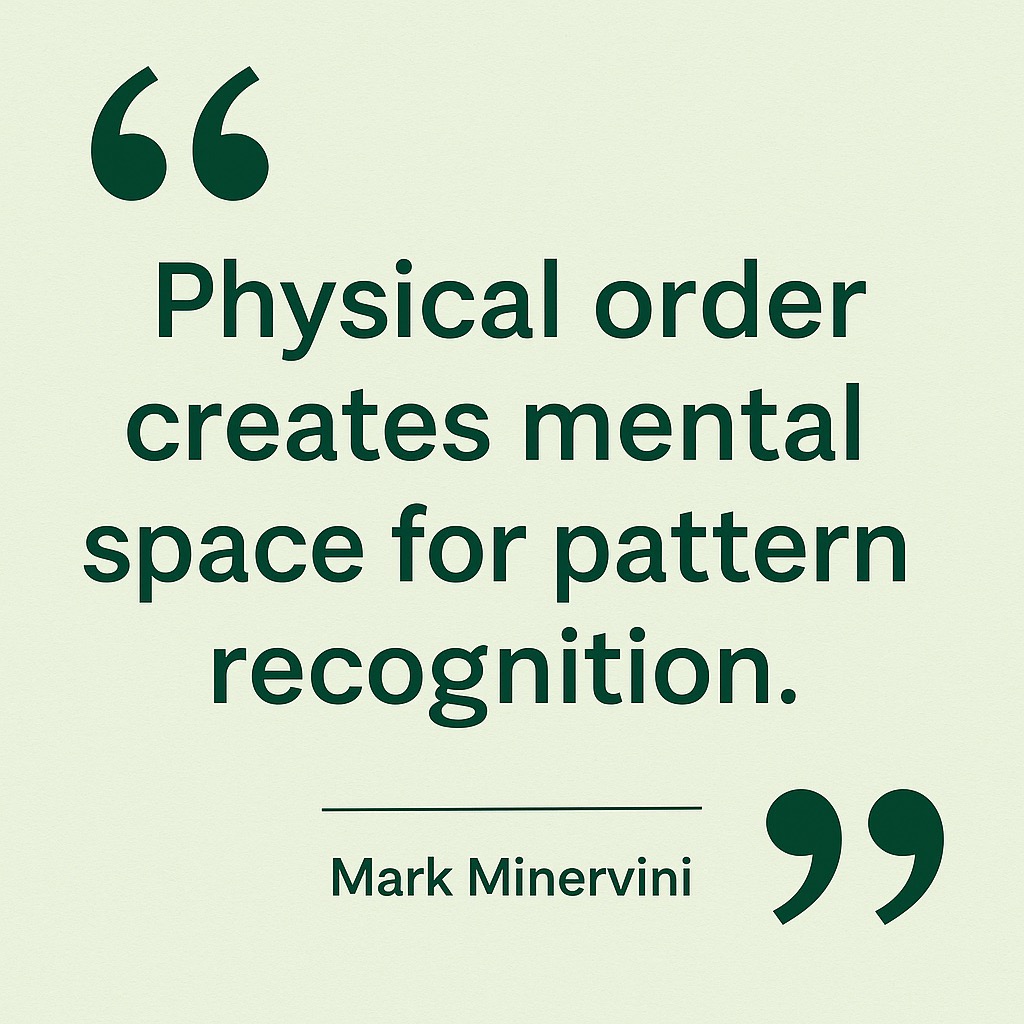Clean Space, Clear Mind: Spring Cleaning Your Portfolio for Trading Success
Clean Space, Clear Mind: Spring Cleaning Your Portfolio for Trading Success
Springtime brings with it a sense of renewal—a fresh start not just for your home, but for your habits, routines, and mindset. While many take this seasonal opportunity to organize closets or wash windows, savvy traders recognize it as a perfect time to declutter more than just their living space. Spring cleaning presents an ideal opportunity to clean up both your physical environment and your portfolio.

Just as a trading desk buried under stacks of reports and empty coffee cups creates cognitive friction, a portfolio cluttered with impulsive purchases and forgotten positions can silently drag down performance. Clearing your physical environment creates the mental space needed to evaluate your holdings objectively, while streamlining your portfolio reduces the cognitive load that leads to decision fatigue and emotional trading. Spring is the perfect season for renewal—so what better way to embody this as a trader than to give your portfolio a deep clean? From dusting off old strategies to weeding out stagnant trades, traders can gain sharper analysis, reduced stress, more consistent execution, and improved returns in a market that punishes scattered thinking.
The Psychology of Clutter and Decision-Making
Physical environments have been psychologically proven to impact cognitive function. The connection between physical space and mental clarity isn’t just intuitive—it’s backed by cognitive research showing how visual chaos inhibits focus and impairs decision-making. Studies from Princeton University’s Neuroscience Institute demonstrate that visual clutter competes for neural resources, significantly reducing the brain’s ability to focus and process information efficiently. This phenomenon helps explain why even the most brilliant traders can make poor decisions when surrounded by disorder.
The extreme case of hoarding disorder provides a stark illustration of this relationship. Individuals suffering from severe clutter often experience heightened anxiety, depression, and social isolation, trapped in a self-reinforcing cycle where mental health challenges lead to more accumulation, further degrading cognitive function. For traders, similar patterns can emerge when they fail to routinely pick the weeds and maintain the cleanliness of their portfolio. Left unmanaged, this clutter can manifest as decision fatigue or the deterioration of quality decision-making.
Elite hedge fund managers and professional traders have long recognized this connection—Paul Tudor Jones famously maintains an immaculate trading environment, while Ray Dalio’s Bridgewater offices feature minimalist workspaces designed to eliminate distractions. Renowned day trader Mark Minervini also attributes part of his success to his meticulously organized trading station, explaining that “physical order creates mental space for pattern recognition.” The science is clear: when your visual field is cluttered, your focus becomes fragmented, diminishing the quality of the split-second decisions that determine profitability.
Step 1: Spring Cleaning Your Physical Space
Just as you wouldn’t begin spring cleaning by tackling the garage, your trading decluttering journey should start simple. Weeding and rebalancing portfolios might feel daunting, so build momentum by first addressing your physical trading space. Minimalism, especially in your workspace, will offer a calmer home base to think clearly and trade more mindfully.
Begin with a systematic assessment: stand at the entrance of your trading area and notice what immediately creates visual tension or distracts your attention. Identify the essential components that genuinely enhance your trading process—your primary monitor, trading journal, and perhaps a few reference materials—and be ruthlessly honest about non-essential items accumulated through habit rather than necessity. Those inspirational trading books you’ve already read? Consider digitizing the key insights and donating the physical copies. The collection of coffee mugs? Limit yourself to one. Old trading printouts and statements? Scan important documents and shred the rest.
Next, gather those scattered charging cables using simple cable management solutions, position monitors at proper ergonomic heights, and remove unnecessary devices from your primary workspace. Finally, establish a five-minute end-of-day maintenance routine to reset your space completely before logging off, creating a cycle where you return each morning to an environment that supports clear thinking—rather than one that drains your brain before the market even opens.
Step 2: Digital Decluttering
With your physical space organized, turn your attention to your digital environment, where most of your trading decisions actually occur. Spring cleaning goes beyond just your physical space; often, the clutter in our phones, laptops, and trading platforms can be more distracting or overwhelming than a messy desk. Clear screen, clear mind.
Begin by streamlining your trading platform—remove unnecessary technical indicators that create visual noise, and ruthlessly cull watchlists to focus on quality setups rather than maintaining hundreds of marginally interesting symbols. Implement a structured file management system for your research and trade documentation, creating distinct folders for strategies, trade records, market research, and educational materials using consistent naming conventions for easy retrieval.
Trade Ideas can dramatically accelerate this digital organization process by replacing dozens of manual scans with automated alerts, helping you focus on promising setups instead of endlessly scrolling through possibilities. Our AI-driven scans offer customizable layouts that surface only the most relevant opportunities while filtering out the market noise that clouds decision-making. Your trading records also deserve attention—consolidate performance data into a single system to allow for meaningful analysis and ensure everything is properly backed up.
Finally, tame your information flow by unsubscribing from low-value email newsletters, consolidating news sources to 3–5 high-quality providers, and setting specific times to consume market information, rather than allowing constant interruptions throughout your trading day.
Step 3: Weeding Out Your Portfolio
Once your physical and digital space is clean and optimized, it’s time to declutter your portfolio. This process is similar to gardening: weeding out underperformers and dead weight that threatens the overall health of your financial garden. Much like a neglected yard, your portfolio may have too many positions growing wildly in different directions, mystery stocks you’ve forgotten, and a lack of cohesive design.

Examine each position individually—is it still aligned with your strategy, or is it merely taking up capital without bearing fruit? The most important weeds to remove are “zombie positions”—once-promising trades that now linger, half-dead, draining resources. Next, look for overcrowding. If you hold multiple ETFs or stocks serving the same function, consider thinning them. Just as you wouldn’t plant six types of tomatoes in a small garden, your portfolio doesn’t benefit from redundancy.
Remember, even the best gardener can only effectively tend a limited number of plants. If you can realistically monitor only ten positions, stop trying to keep 30 alive. Your goal isn’t the biggest portfolio—it’s the most productive one, where every stock serves a purpose and gets the attention it deserves.
The Performance Benefits of a Decluttered Portfolio & How to Maintain It
Traders who embrace this spring cleaning process experience sharper focus on their highest-conviction ideas, enhanced risk management through improved visibility across positions, and reduced emotional attachment to holdings that no longer serve their strategy. Capital efficiency improves when funds are no longer tied up in dormant positions, and performance tracking becomes more meaningful when each holding has a defined role.
To maintain this clarity, implement ongoing maintenance routines: schedule monthly portfolio reviews, use simple checklists for position entry and exit, and document your reasoning for each trade. Organization isn’t a one-time event—it’s a continual practice that transforms market complexity into manageable, strategic decisions.
Visit Trade Ideas today to give your trading life the spring refresh it deserves.
